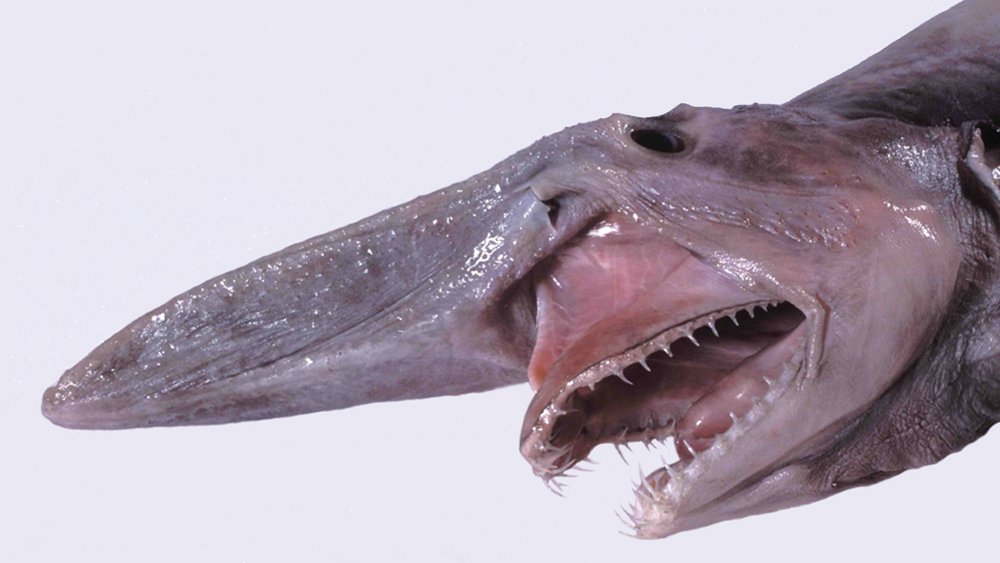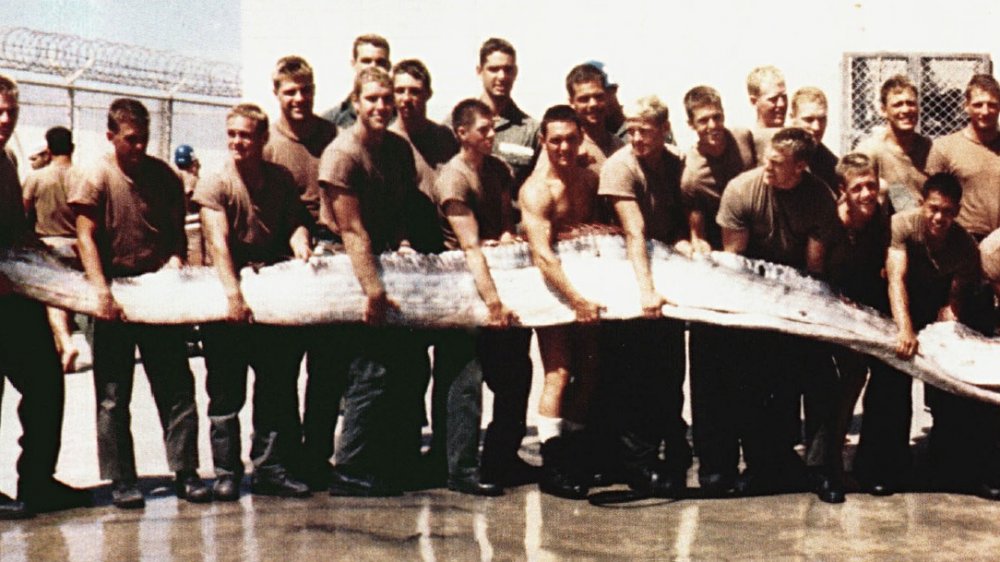Sea Serpents Might Actually Have Existed. Here's Why
Kraken. "Nessy," the Loch Ness Monster. Soe Orm from Scandinavia. The Great American Sea Serpent. That shark from Jaws. Ancient myths and modern stories of water-bound monsters abound in human consciousness and across cultures. The truth, of course, lies somewhere within the hybrid of folklore, documented cryptids, and tall tales told by 16-19th century seafarers seeking to look brave. It makes sense, of course, that the ocean — an immense body of water with no end in sight that once separated continents and to this day defines geopolitics — could cause such fear, wonder, and speculation, especially when all it took was one simple storm to sink a boat carried by its sails and navigating under starlight.
Giant water snakes, in particular — sea serpents — are the stuff of obvious and universal nightmares. Even tiny water snakes — eels — are enough to make skin crawl. Marine Insight documents a host of unexplained sea serpent stories to fuel the mind, including the carcass of a supposed plesiosaurus discovered in 1997. However, the creatures in many stories are recognizable as deriving from actual species, ballooned by word-of-mouth narratives that transform an elephant seal into a 500-foot long, slathering mass of Cthulu-esque fangs.
That being said, the world's oceans are still largely unplumbed. According to the National Ocean Service, an entire 80% of the world's oceans are yet unexplored. As we learn more about our world, the line between the fantasy and reality of sea serpents becomes clearer and clearer.
Out of the depths of the ocean and imagination
At this point, there are a host of known candidates for real-life sea serpents. Most of them are large-sized, bony fish, or lesser-known sharks.
At the top of the list is the basking shark, the second-largest fish in the world. The basking shark is actually a harmless feeder of tiny plankton that roams the ocean and filters up to 4,000,000 pounds of water per hour while feeding, as reported by Oceana. Next is the oarfish, a relatively unknown, eel-like dweller of the deep with large eyes and a red dorsal fin that runs the entire length of its 50-foot, 600-pound body. According to a 2011 study cited by Marine Madness, it travels up and down, rather than horizontally along with ocean currents, and for some reason only surfaces when it's ill or about to die.
Then there's the horrific-looking frilled shark, which, as documented by National Geographic, hasn't undergone any significant evolution in approximately 80 million years. It's only 6 feet long, sure, but has 300 teeth spread across 25 rows, and looks as ancient as it is. Then there's the goblin shark, a terrifying-looking horned shark with a fleshy appearance and jaws that protrude almost like lips. First discovered off the coast of Japan in 1898, it has what's called a "slingshot feeding" mechanism that propels its body forward at 3.1 meters per second, as described by Hokkaido University.
All in all, there are enough living, fringe species of fish and sharks to feed the imagination and lend credence to legends about sea serpents and other ocean-bound monstrosities. Whatever isn't supplied by fiction can easily be supplied by reality.

